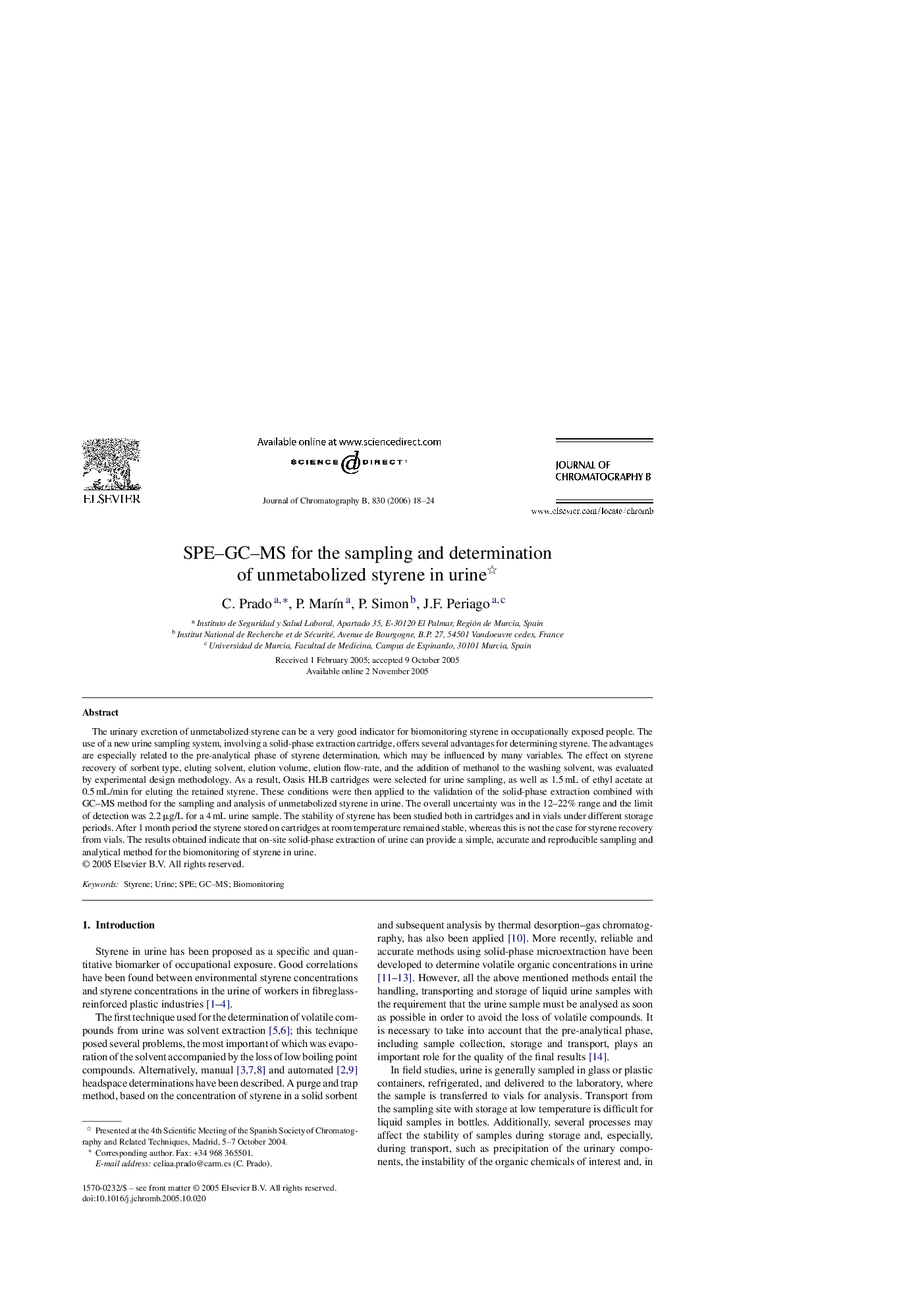| Article ID | Journal | Published Year | Pages | File Type |
|---|---|---|---|---|
| 1216366 | Journal of Chromatography B | 2006 | 7 Pages |
The urinary excretion of unmetabolized styrene can be a very good indicator for biomonitoring styrene in occupationally exposed people. The use of a new urine sampling system, involving a solid-phase extraction cartridge, offers several advantages for determining styrene. The advantages are especially related to the pre-analytical phase of styrene determination, which may be influenced by many variables. The effect on styrene recovery of sorbent type, eluting solvent, elution volume, elution flow-rate, and the addition of methanol to the washing solvent, was evaluated by experimental design methodology. As a result, Oasis HLB cartridges were selected for urine sampling, as well as 1.5 mL of ethyl acetate at 0.5 mL/min for eluting the retained styrene. These conditions were then applied to the validation of the solid-phase extraction combined with GC–MS method for the sampling and analysis of unmetabolized styrene in urine. The overall uncertainty was in the 12–22% range and the limit of detection was 2.2 μg/L for a 4 mL urine sample. The stability of styrene has been studied both in cartridges and in vials under different storage periods. After 1 month period the styrene stored on cartridges at room temperature remained stable, whereas this is not the case for styrene recovery from vials. The results obtained indicate that on-site solid-phase extraction of urine can provide a simple, accurate and reproducible sampling and analytical method for the biomonitoring of styrene in urine.
